During our visit to the 26th edition of the Tokyo International Coin Convention in early May 2015, I had the honor of being invited by Mr. Hideo K. Futahashi, member of the Japanese Numismatic Association "JAPAN NUMISMATIC SOCIETY" , to a seminar organized by Mr. Shoji Yoshida, one of the largest collectors of Hansatsu in Japan.
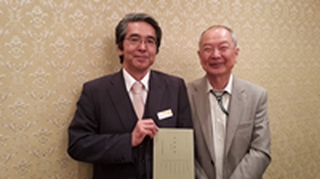
(Mr. Hideo K. Futahashi left and Mr. Shoji Yoshida right)
In this article, I propose to revisit the history of Hansatsu that became a theme for many collectors worldwide.


These "paper money" or "paper currency" are issued during the Edo period (former name of Tokyo), which extends from 1603 to 1868. Japan is at this period a feudal state dominated by the central authority of the Tokugawa Shoguns who lead the country and are the only ones to mint coins. To solve the problem of the lack of coins in circulation, they allow provincial lords to issue notes for trade within their field.
The term Han 藩 refers to large territories enhanced by their rice production to be more than 10 000 koku. A koku is a unit of measurement equivalent to 180.39 rice liters representing the amount of rice consumed by a Japanese in one year. These territories are governed by lords called Daimyô 大名.
The term Satsu 札 is used for a banknote.
There are about 275 Han and 200 of them issuing banknotes.
Hansatsu have a very particular shape that can be compared to that of a bookmark. They are filled with Japanese characters and designs or motifs of gods or animals symbolizing happiness, abundance or wealth.
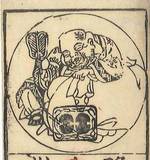

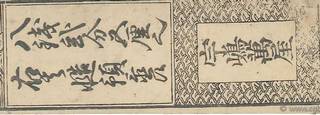
The most common is a portly man sitting on two barrel-shaped rice bags and wearing on his shoulder an oversized bag (Daikokuten - Japanese divinity of wealth, commerce and trade).
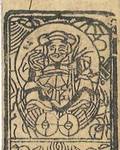
The value of the paper notes is most often expressed in currencies of silver, gold or copper, and more rarely in rice equivalent, wine or oil. As with all types of currency, there are counterfeits. These paper money so have safety signs: secret letters hidden in the drawings, watermark, embossed stamp.
Hansatsu are issued both by cities and temples and by noble families. The Fukui clan was the first to issue them in 1661. Their manufacture is similar to that of the stamp. After printing thick paper, the sheets are cut using a block and a knife. The printed strips are then enclosed in wooden boxes tied with ropes.
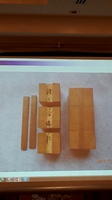
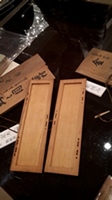
In 1871 the Meiji government ordered the abolition of Hansatsu and their exchange against the new national currency Dajoukansatsu first note issued by the central government in Japan. The exchange was permitted until 1879 and some include overprint in Yen, in Sen or in Rin.
The Hansatsu collection can be very interesting because it is so varied, to complete this article, find below the link to the website that will tell you how to classify and date Hansatsu:
http://www.banknoteden.com/Japan.html
http://www.banknoteden.com/Japanhansatsudates.html
You can browse our Hansatsu banknotes in our e-shop :
http://www.cgbfr.com/boutique_recherche,FJ1576B9CFE54BA6.html























